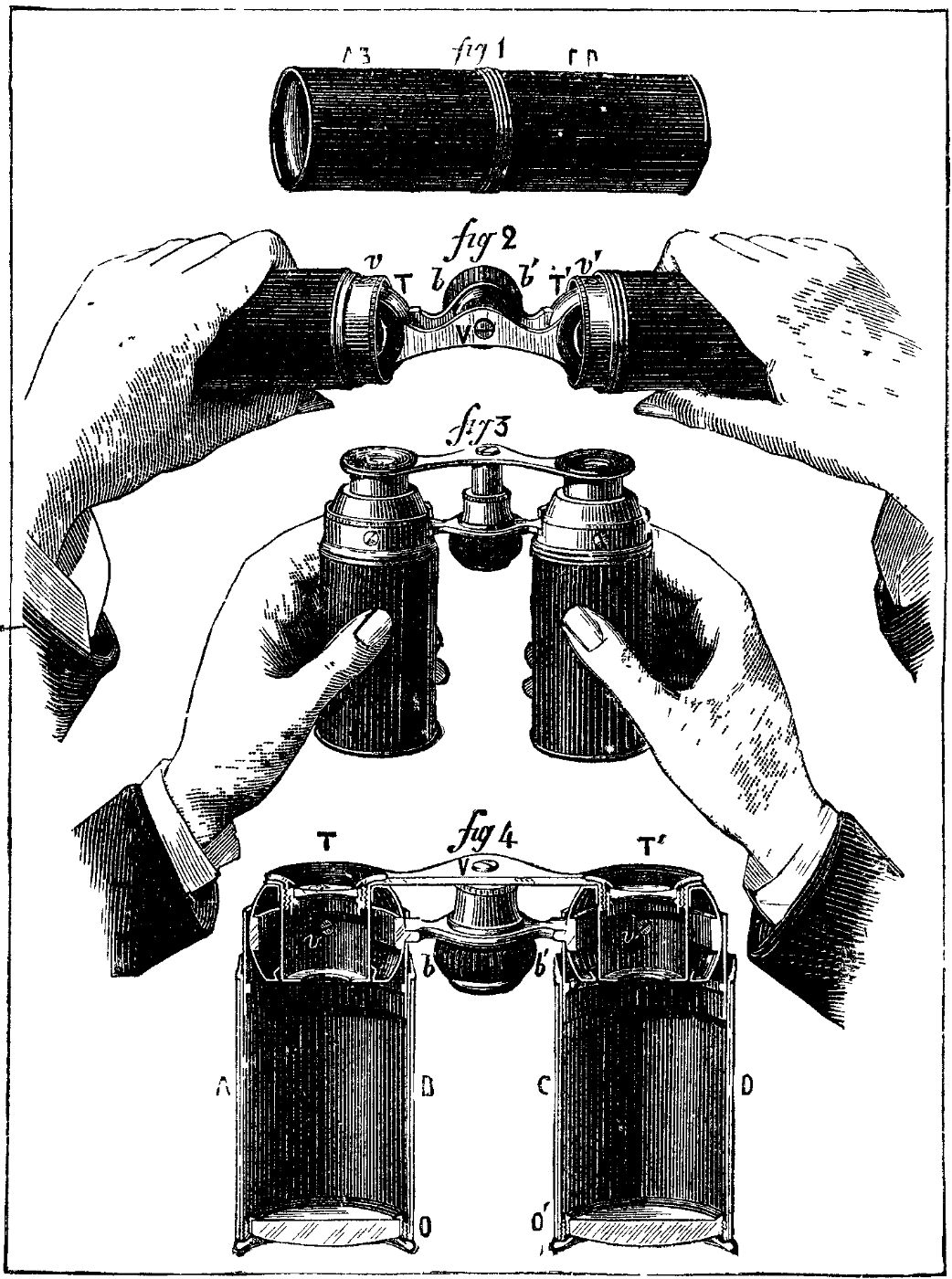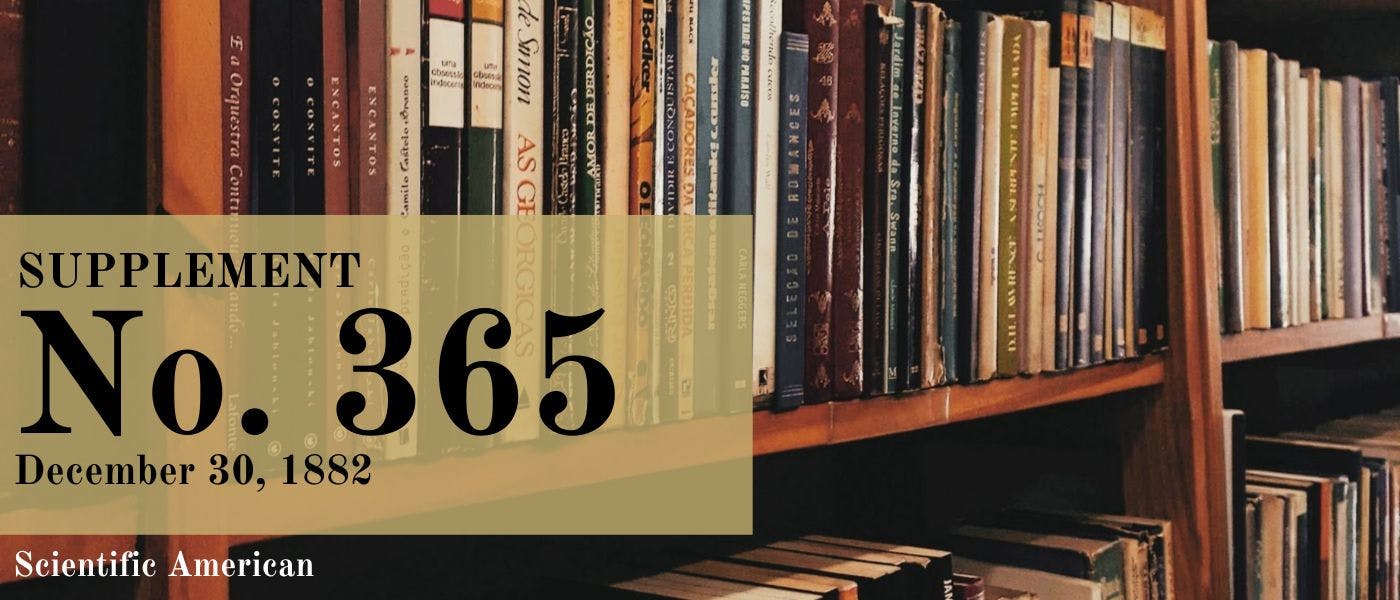Scientific American Supplement, No. 365, December 30, 1882 by Various, is part of the HackerNoon Books Series. You can jump to any chapter in this book here. A NEW POCKET OPERA GLASS.
A NEW POCKET OPERA GLASS.

Inasmuch as high power combined with small size is usually required in an opera glass, manufacturers have always striven to unite these two features in their instruments, and have succeeded in producing glasses which, although sufficiently small to be carried in the waistcoat pocket, are nevertheless powerful enough to allow quite distant objects to be clearly distinguished. Recently, a Parisian optician has succeeded in constructing an instrument of this kind that is somewhat of a novelty in its way, since its mechanism allows it to be closed in such a manner as to take up no more space than a package of cigarettes (Fig. 1.) It is constructed as follows:
AB and CD (Fig. 1) are two metallic tubes, in which slide with slight friction two other tubes. Into the upper part of the latter are inserted two hollow elliptical eye-pieces, which move therein with slight friction, and which are united by the two supports tor the wheel, bb (Fig. 4), and endless screw that serve for focusing the instrument. The eyepieces, TT, are held in the tube by means of two screws, vv (Figs. 2 and 4), in such a way that they can revolve around the latter as axes. The lenses of the eye-piece are fixed therein by means of a copper ring. The object glasses are placed in the ends of the tubes, AB and CD, at oo.
When the instrument is closed, it forms a cylinder 35 millimeters in diameter by 11 centimeters in length. To open it, it is grasped by the extremities and drawn apart horizontally so as to bring it into the position shown in Fig. 2. Then it is turned over so that the screw, V, points upward, while at the same time the two tubes are pressed gently downward. This causes the eye-pieces to revolve around their axes, vv, and brings the two tubes parallel with each other.—La Nature.
About HackerNoon Book Series: We bring you the most important technical, scientific, and insightful public domain books.
This book is part of the public domain. Various (2006). Scientific American Supplement, No. 365, December 30, 1882. Urbana, Illinois: Project Gutenberg. Retrieved https://www.gutenberg.org/cache/epub/18763/pg18763-images.html
This eBook is for the use of anyone anywhere at no cost and with almost no restrictions whatsoever. You may copy it, give it away or re-use it under the terms of the Project Gutenberg License included with this eBook or online at www.gutenberg.org, located at https://www.gutenberg.org/policy/license.html.

